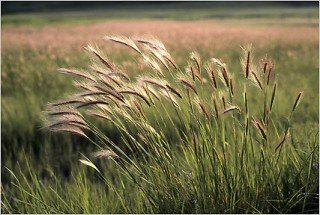* By Olivia Judson New York Times *
Imagine the Earth without grasses.
There would be no lawns or meadows. No prairies. No savannahs or steppes. No wheat fields or rice paddies.

No sugar cane.
No sheep, elephants or horses.
No people.
We live in the age of grass. Indeed, from our point of view, the evolution of grasses was one of the most momentous events in the history of the Earth. Which is why I’m nominating them for Life-form of the Month: March.
Let’s limber up with a few facts. In general, grasses spread their pollen by wind, so they are not dependent on bees or other insects. Grasses also grow fast, and can easily colonize patches of bare ground, or move into a landscape after a fire. They can withstand being eaten (or mown) better than most other plants, because their leaves grow from the base, not the top.
Like all plants, they make energy from the sun by means of photosynthesis. However, grasses have repeatedly evolved a variation — known as C4 photosynthesis — that uses less water, and is thus a particular advantage in hot, dry places, or when carbon dioxide levels are low. This has allowed them to flourish in difficult habitats, like rocky outcrops and dry soils. One other detail: grasses fill their leaves with silica. That is, they are factories for tiny opals.
As a group, grasses have been wildly successful. Today, the grass family contains more than 10,000 species — that’s more species of grass than species of bird — and grasslands cover about a third of the planet’s landmasses. (“Grassland” refers to an ecosystem, like prairie, where grasses dominate; it doesn’t mean they are the only plants there.) Grasses can be tall (think bamboo) or short (think lawns), and they include our most important crops. Rice, wheat, rye, oats, maize, millet, barley, sorghum and sugar cane are all grasses.
We humans are dependent on grasses: we get more than half our calories directly from the tetrad of rice, wheat, maize and sugar cane, and we feed grasses to our sheep, goats, horses and cows.
But I’m getting ahead of myself.
Read more at New York Times
ATTENTION READERS
We See The World From All Sides and Want YOU To Be Fully InformedIn fact, intentional disinformation is a disgraceful scourge in media today. So to assuage any possible errant incorrect information posted herein, we strongly encourage you to seek corroboration from other non-VT sources before forming an educated opinion.
About VT - Policies & Disclosures - Comment Policy



